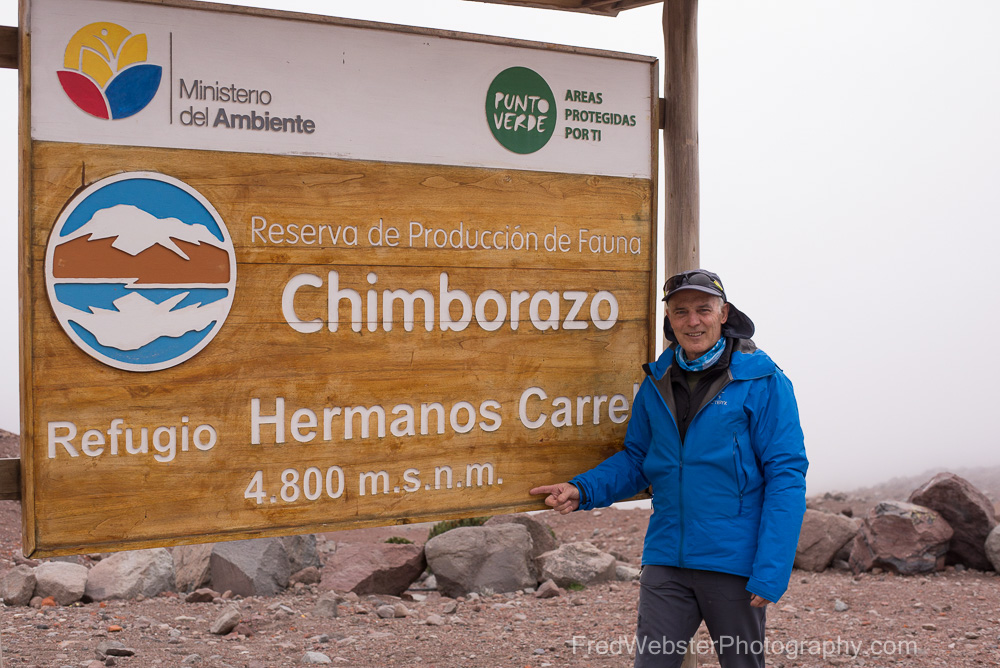We travelled up to Chimborazo National Park for a high altitude hike. Due to the equatorial bulge the summit of Chimborazo at 6268m takes it farther from the centre of the earth than any other peak, including Mount Everest. The centrepiece is the 58,000 hectare Chimborazo Reserve and National Park at 4600m which was created in 1987 as a haven for alpacas, llamas and especially wild vicunas, which had disappeared from Ecuador around the time of the Conquest. A reintroduction programme has brought them back to 2500 strong eking out a life in the thin air and marginal terrain high up in the refuge.
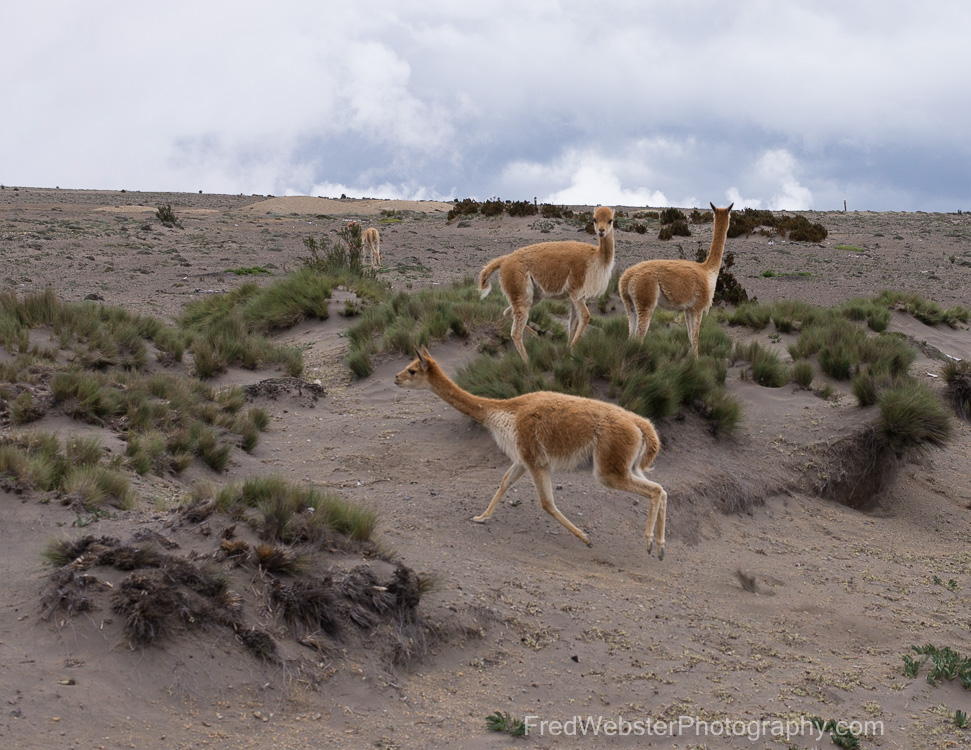
The ride up the mountain winds through a changing terrain from the lush valley to a barren alpine landscape. Flora becomes very spartan. Tufts of grasses and some alpine flowers are scattered about the barren, dusty terrain. The view from the road opened up a vast expanse of treeless valley. Llama could be spotted occasionally but as we climbed into the very high altitude we could see small herds of vicunas. Vicunas are camelids, living in groups comprising a single territorial male with his family (or harem), all-male groups or groups of adult females with their young. They tended to tolerate my human presence. They are not nearly as skittish as the deer where I live and let me approach within a reasonable distance.
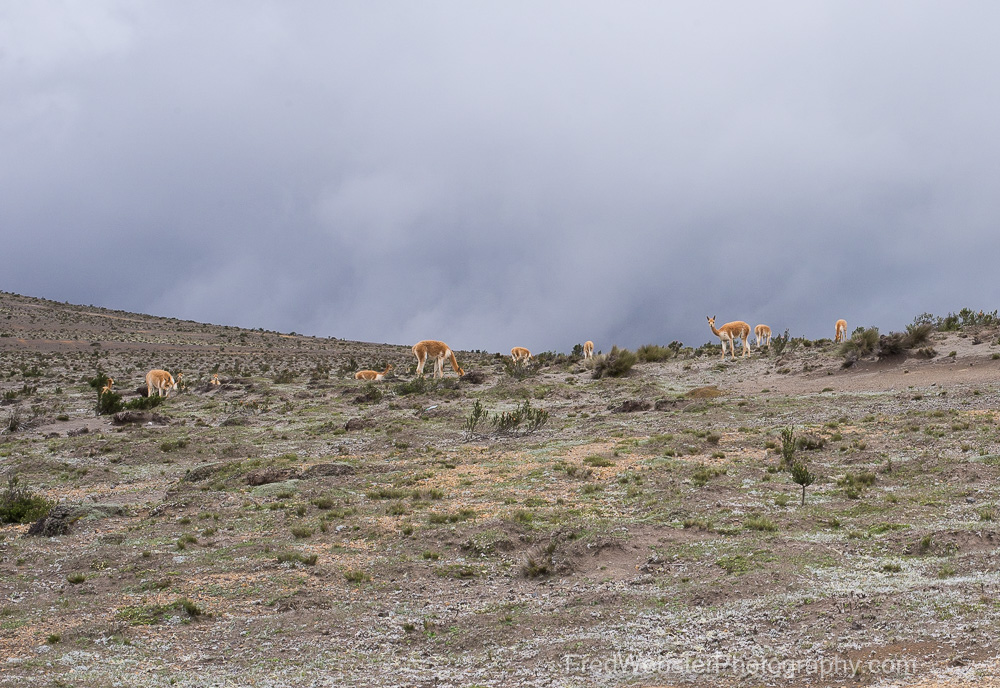
They are known for their extremely fine will, which is very expensive because the animal can only be shorn every three years and has to be caught from the wild.
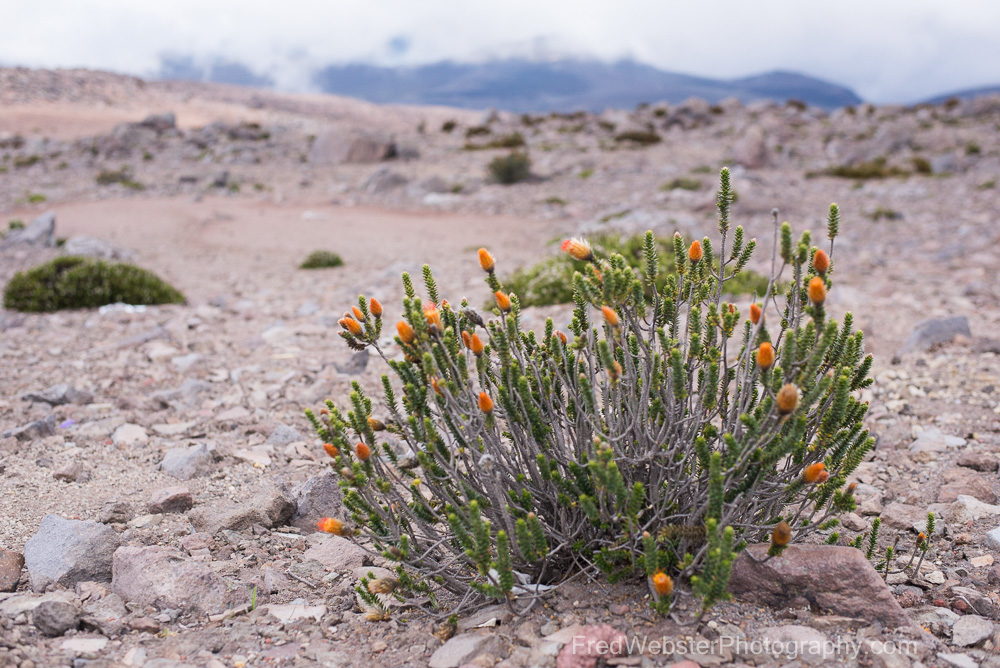
Getting out of the vehicle at the Chimborazo exhibit centre I was immediately affected by the thin air. My legs felt like dead weight and a short walk to the park sign became a go slow effort to manage my light-headedness. We headed into the coffee hut for some coca tea which is purported to help while we adjusted to the affect of the new heights. Effects at high elevations cause your body systems to slow down. Many people struggle with headache and dehydration as quick evaporation of sweat that you don’t notice while your body is working hard takes its toll. Some people are affected with symptoms while others, annoyingly, don’t seem to be bothered at all.
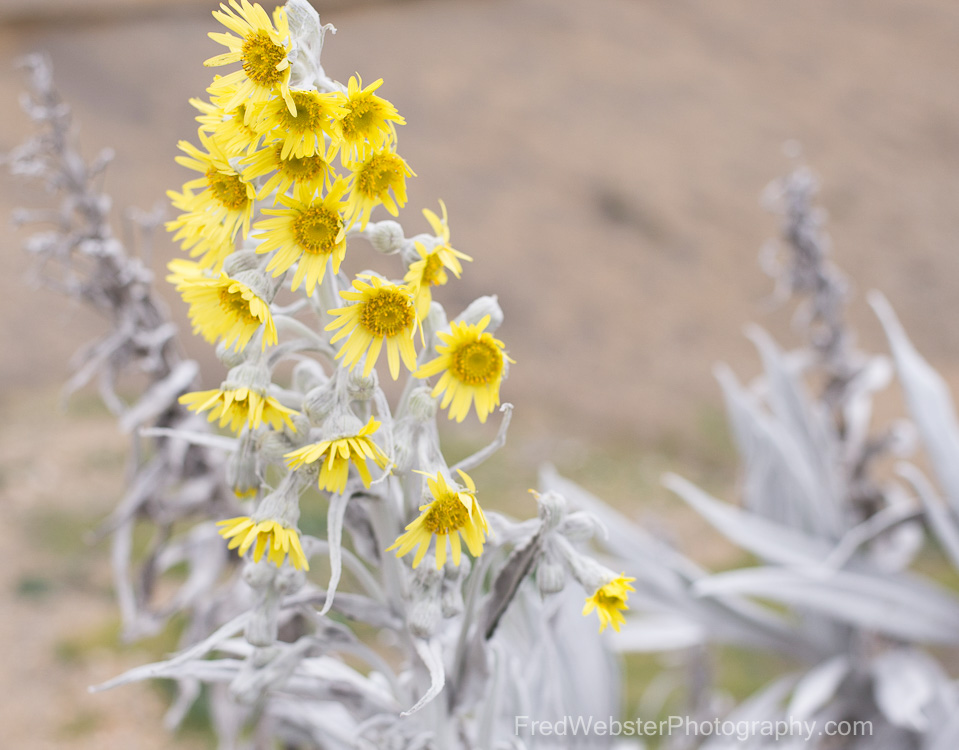
Travel Tips for managing; Hydrate will BEFORE you travel up and avoid alcohol. Pre-medicate by taking either aspirin or Advil. You might want to ask your doctor for some altitude sickness medication before you go. Eat small meals. Because your stomach is likely to struggle at altitude initially treat it kindly. Consider eating lots of soup rather than heavy foods. And listen to the locals. They have local remedies like coca tea to drink and plant leaves to sniff on the trail.
Walk slow and learn the five-steps-at-a-time hike. Don’t try to push through it.
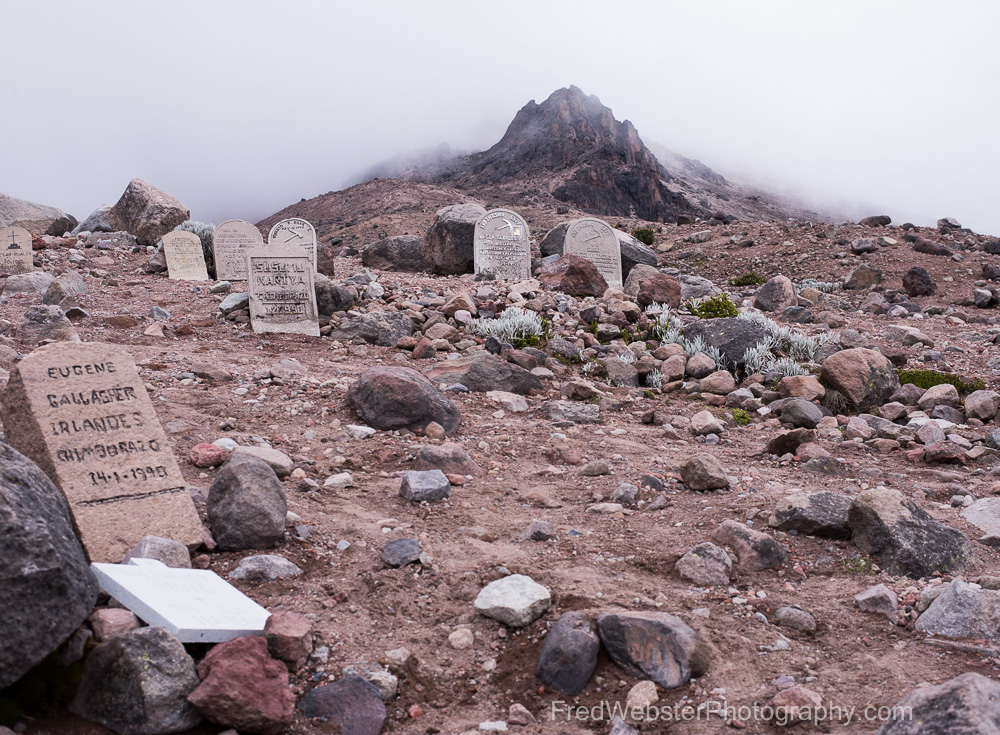
The hike up to the Edward Whymper memorial is a short distance but a difficult trek, even for those in good shape due to the 60 meter rise. If you hike up to the alpine like don’t walk past the warning signs. The glacier may look solid but avalanches easily. The tomb stones of climbers who became permanent residents of the mountain are good safety reminders.
From the memorial we hiked down a trail which is much more manageable, hoping to have a glimpse of the mountain peak through the heavy cloud. But we were left to have that view from the airplane on a flight back to Quito in a few days.

How to get there: Catch a bus from Riobamba to the reserve entrance which leaves an 8km hike to the first refuge. Alternatively you can arrange transportation with a tour operator/guide.
Where to stay: Riobamba is the nearest town which is about a 1 1/2 hour drive offering a variety of accommodation. We stayed at Hacienda Abraspungo, a country-style compound with elegant Colonial decor, chic spacious rooms and lovely gardens. A 4-star hotel rated as the best value in Riobamba.

